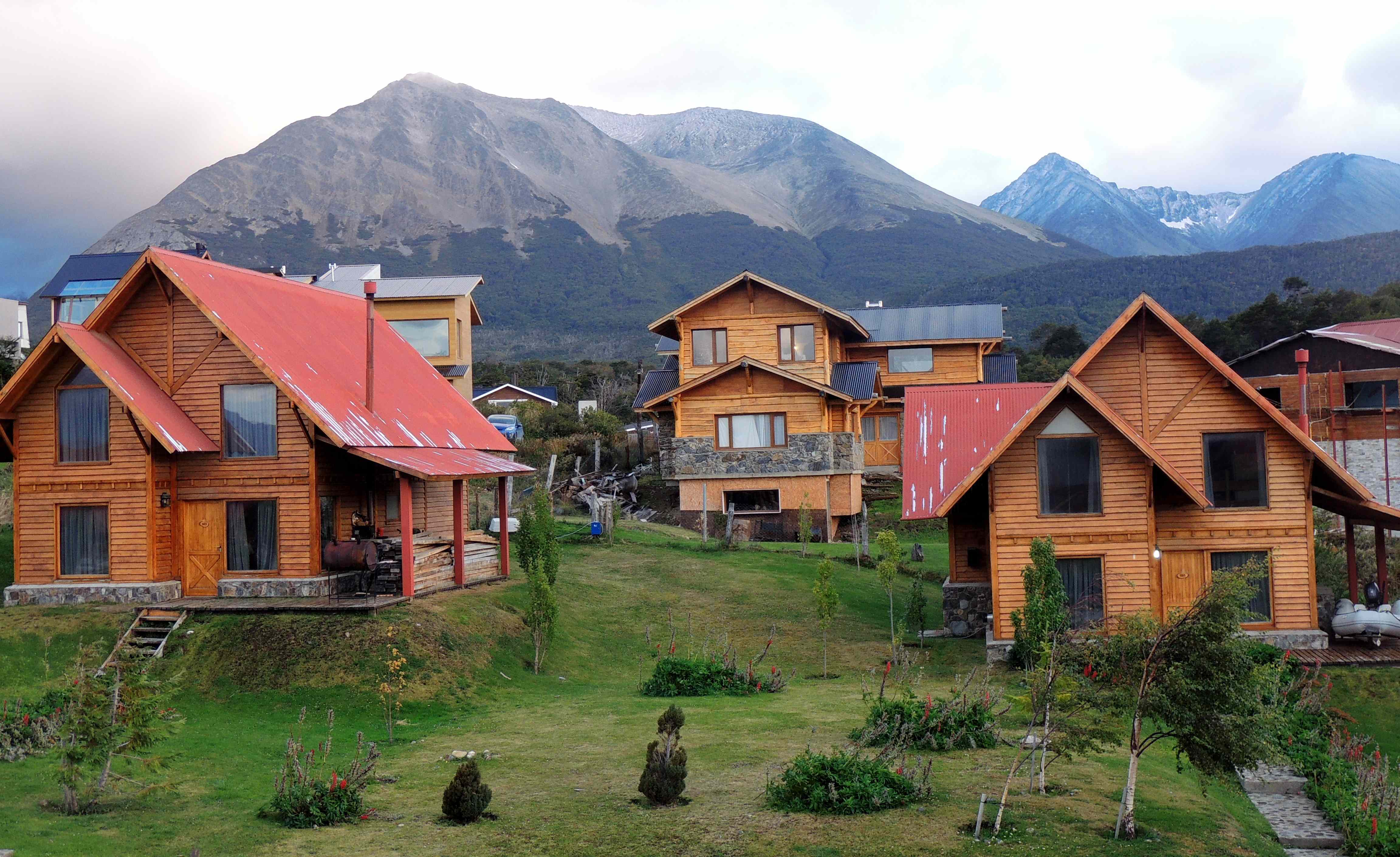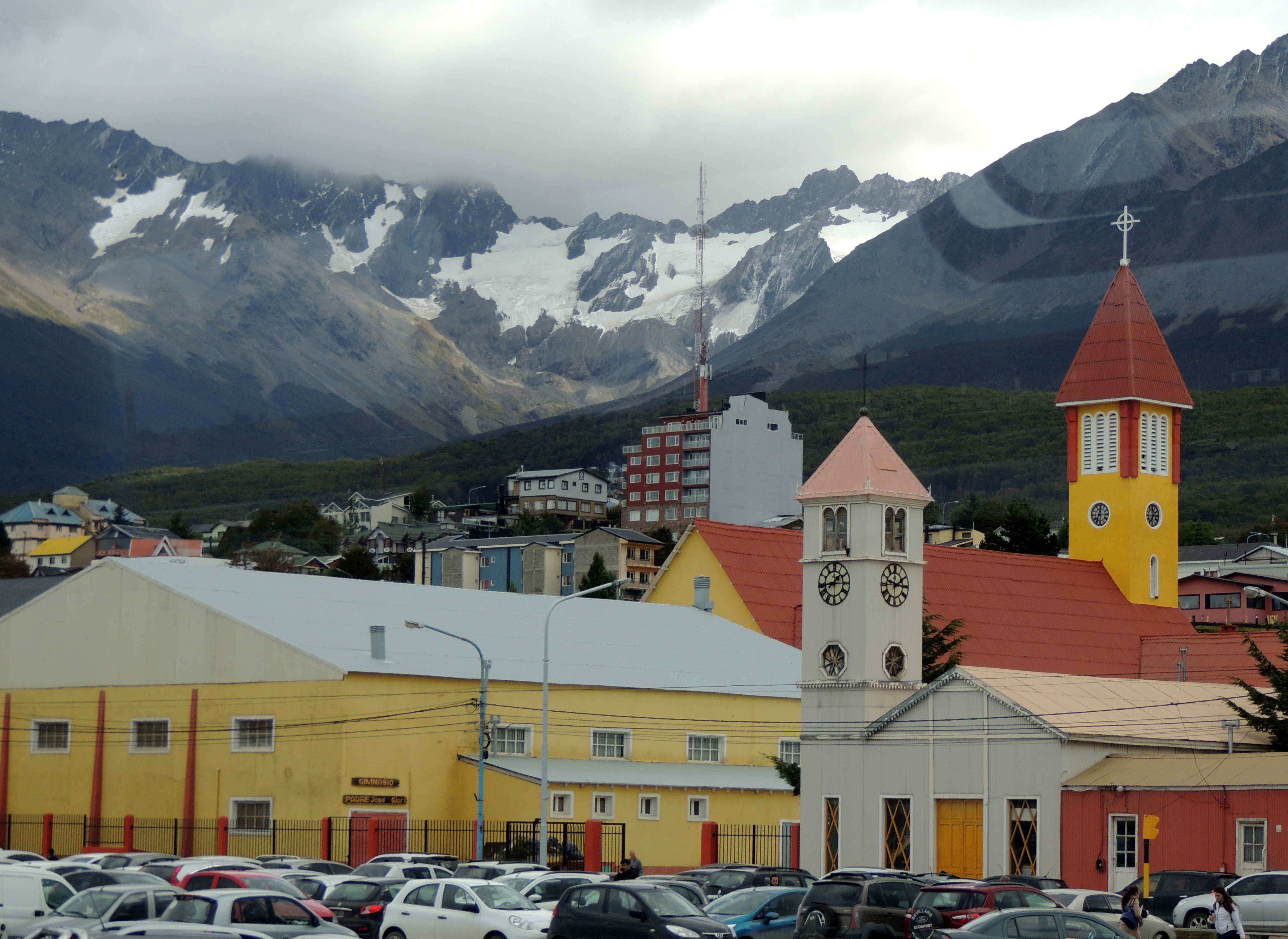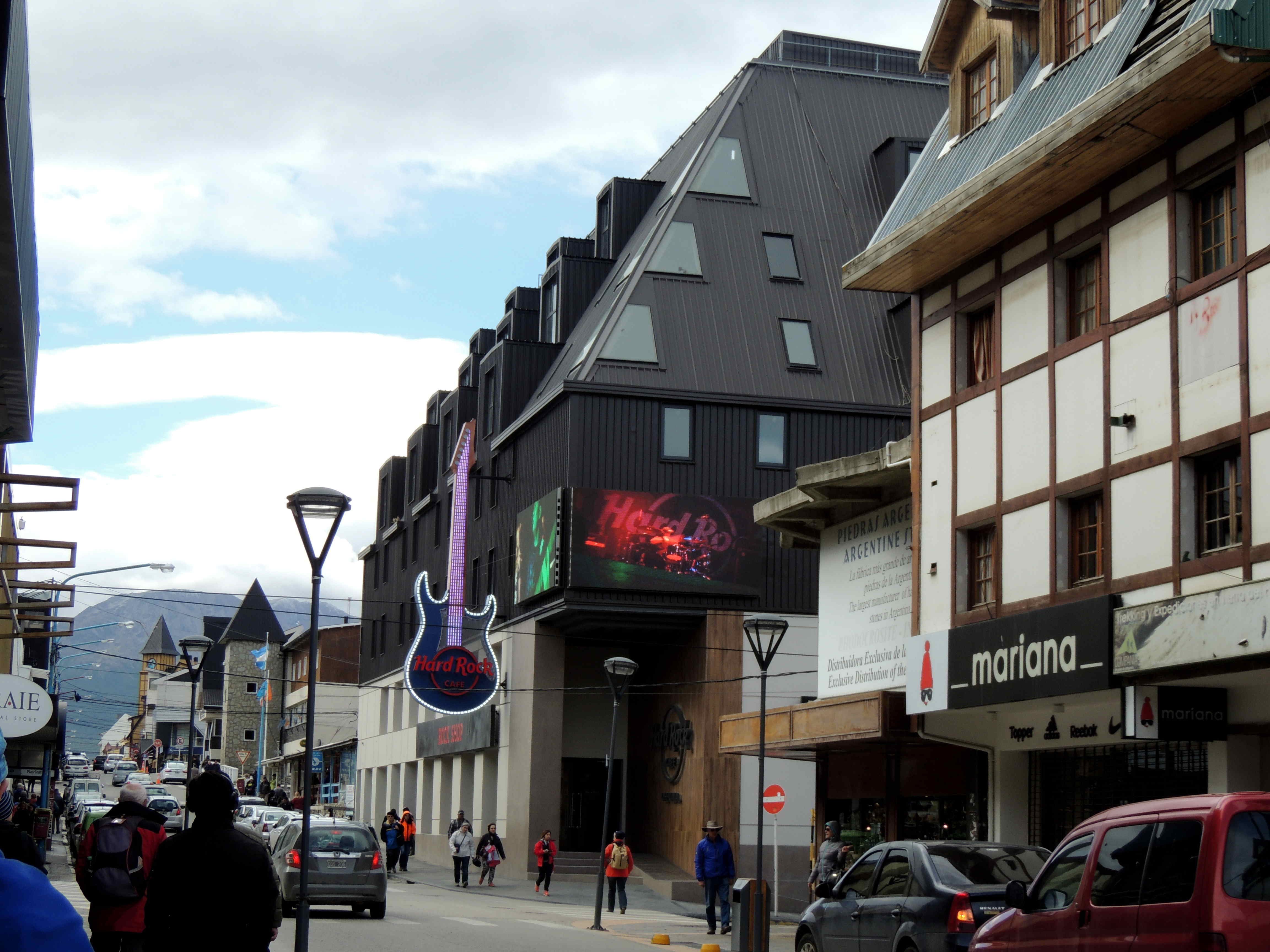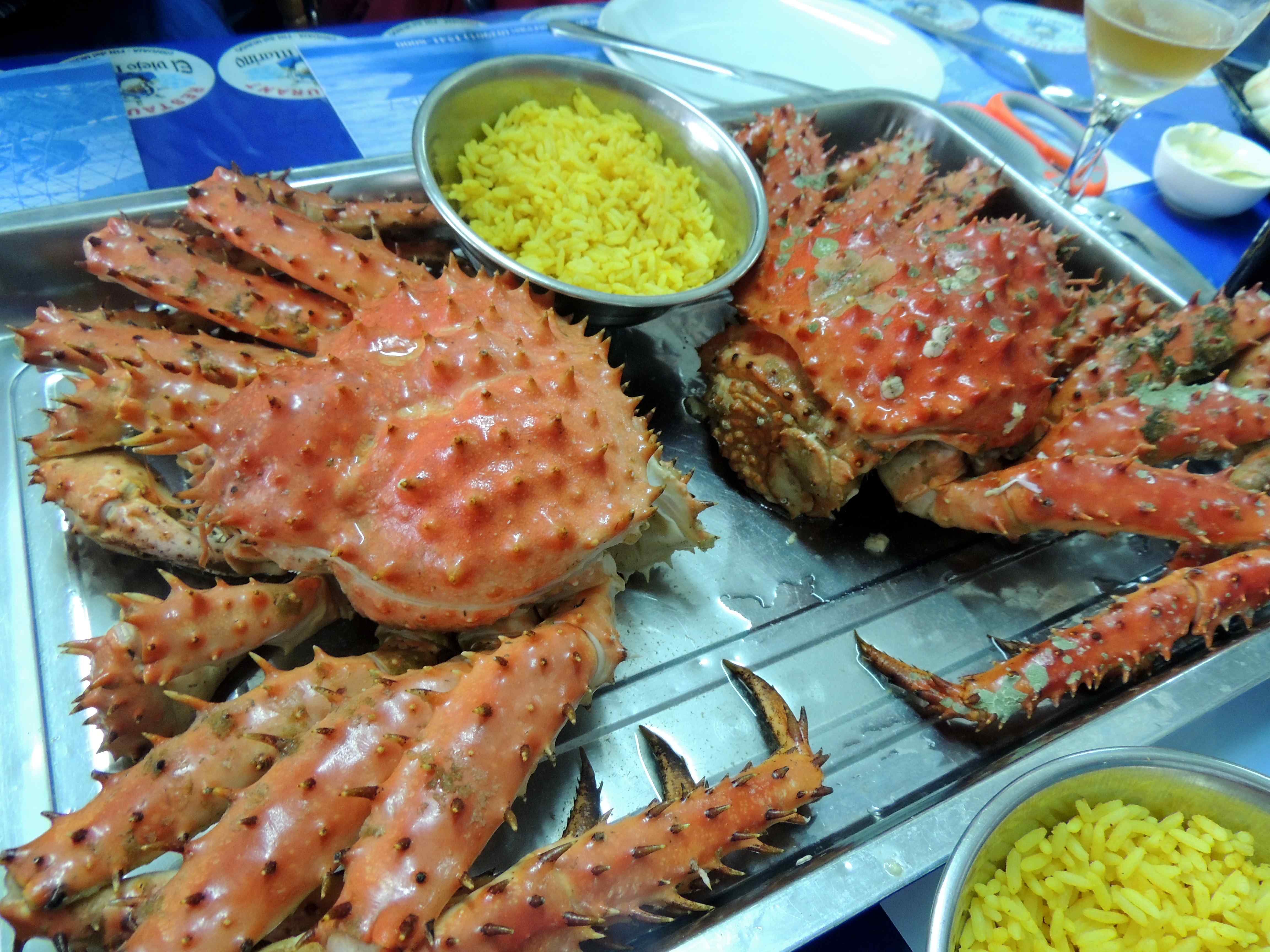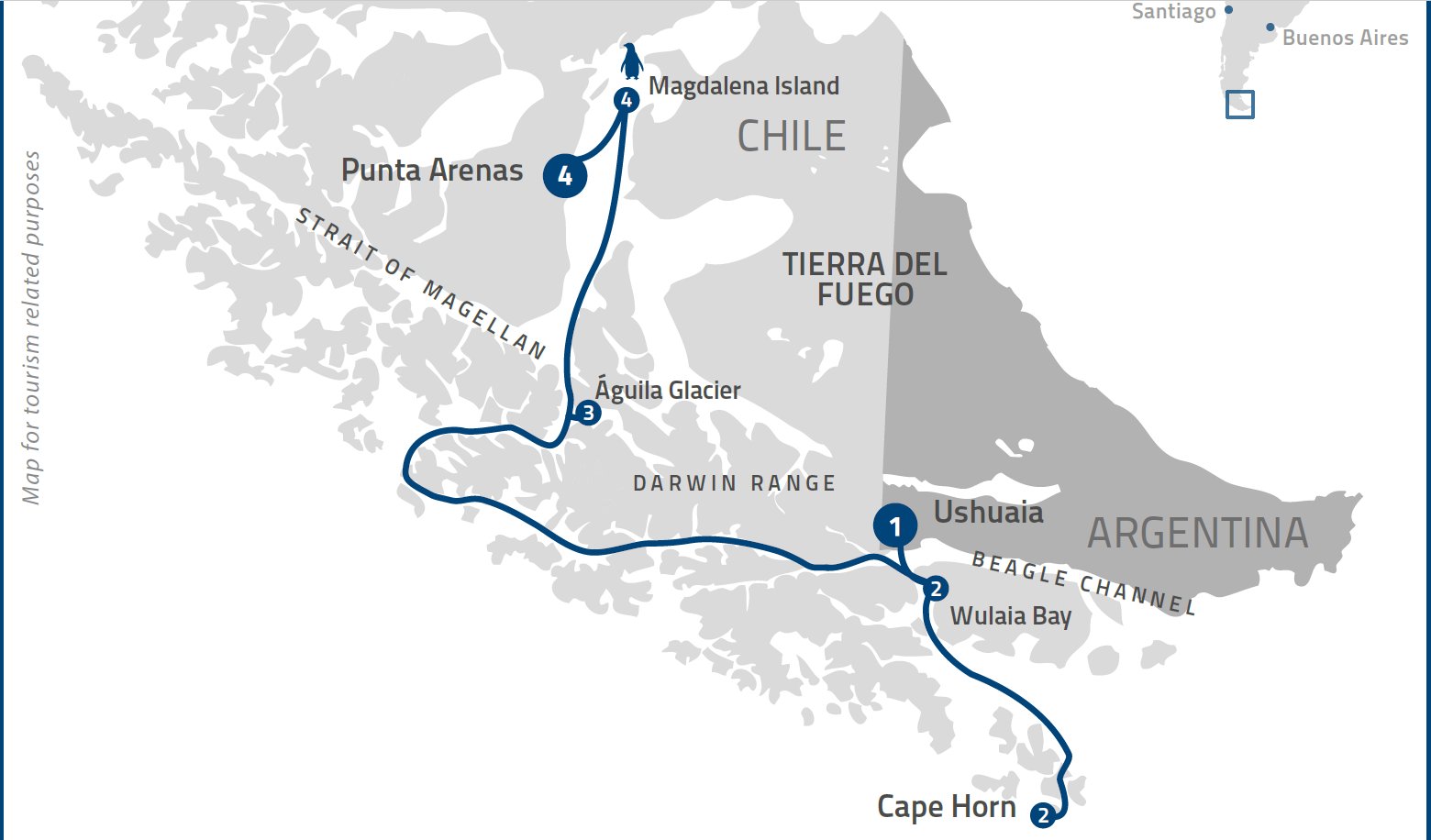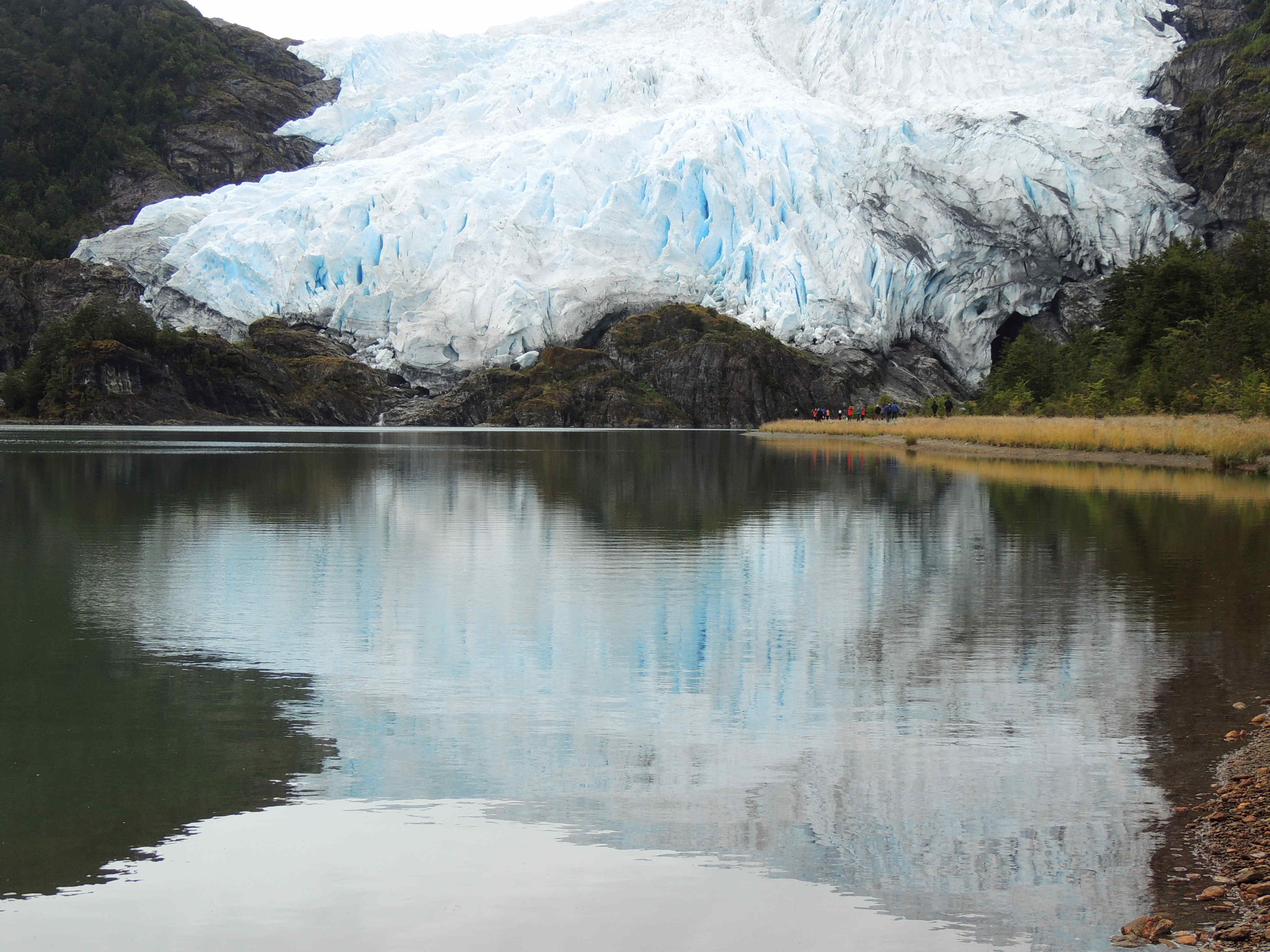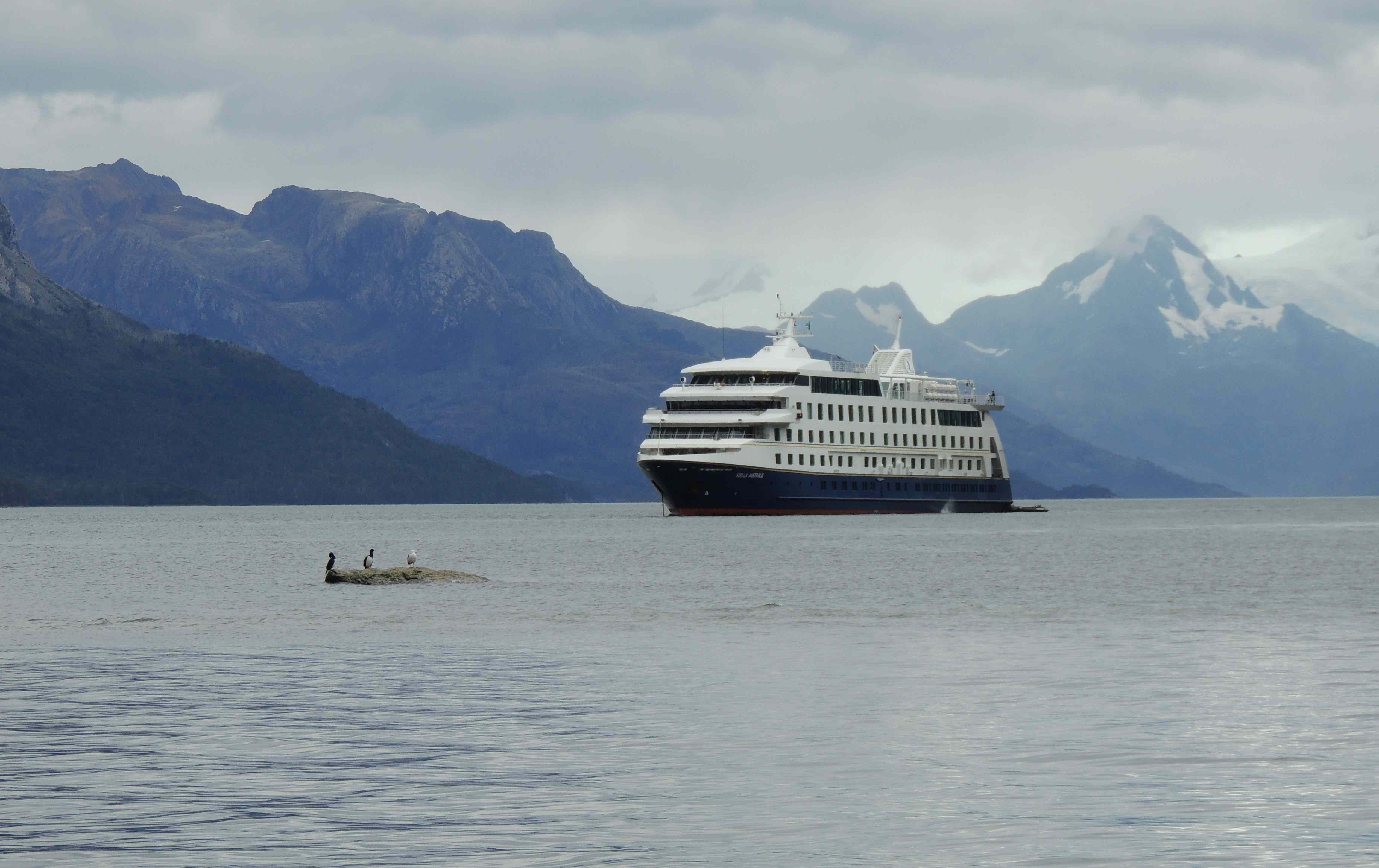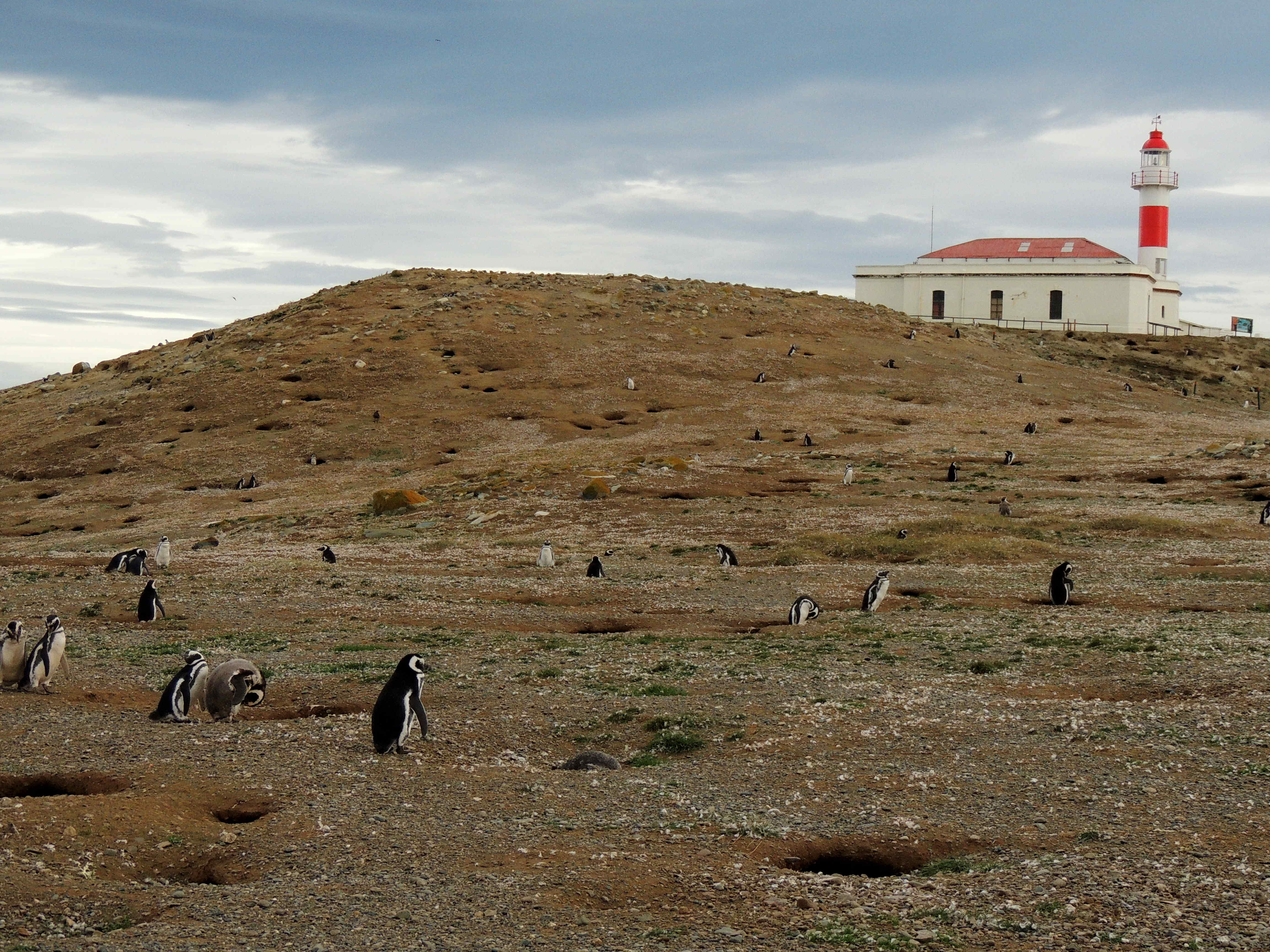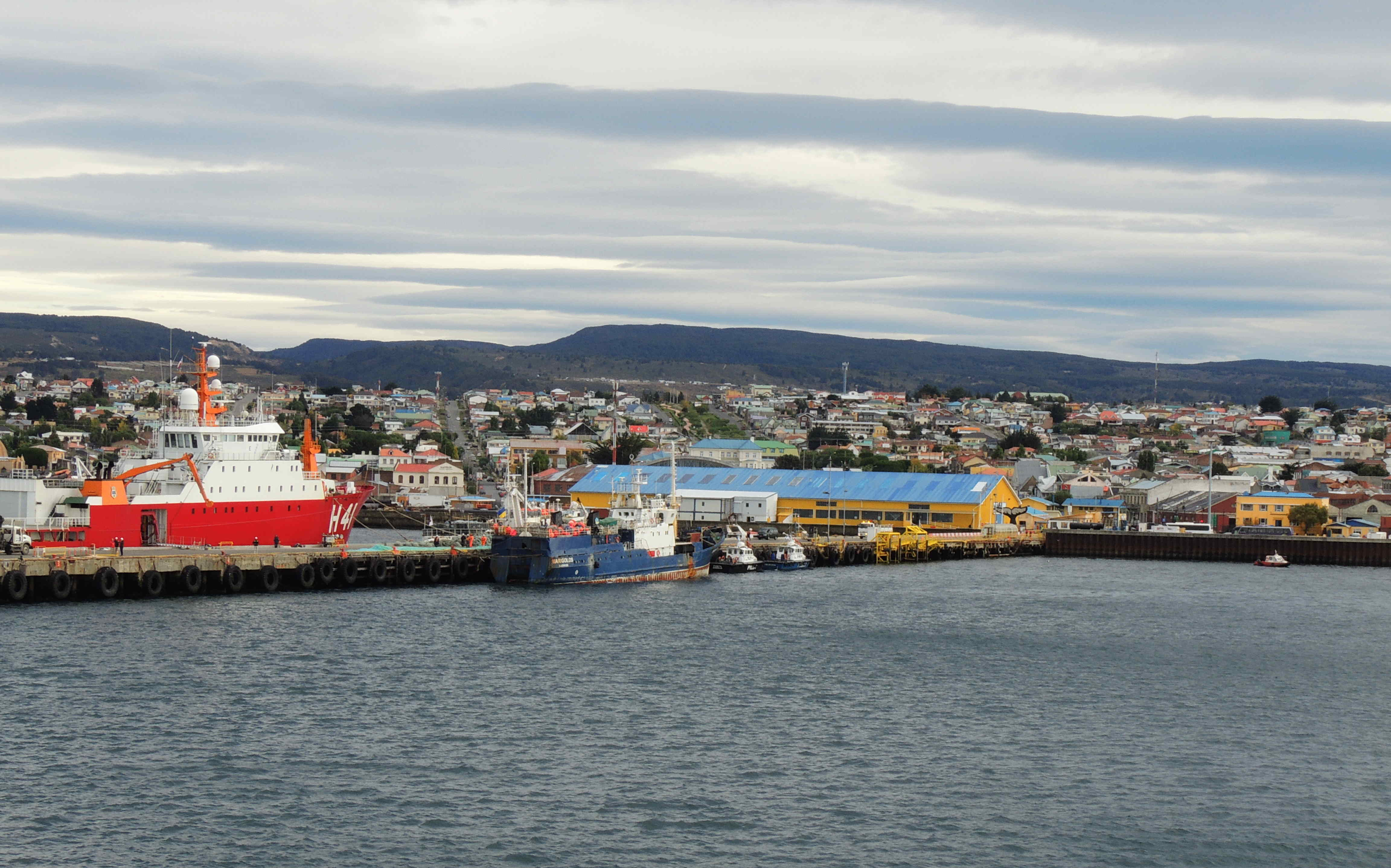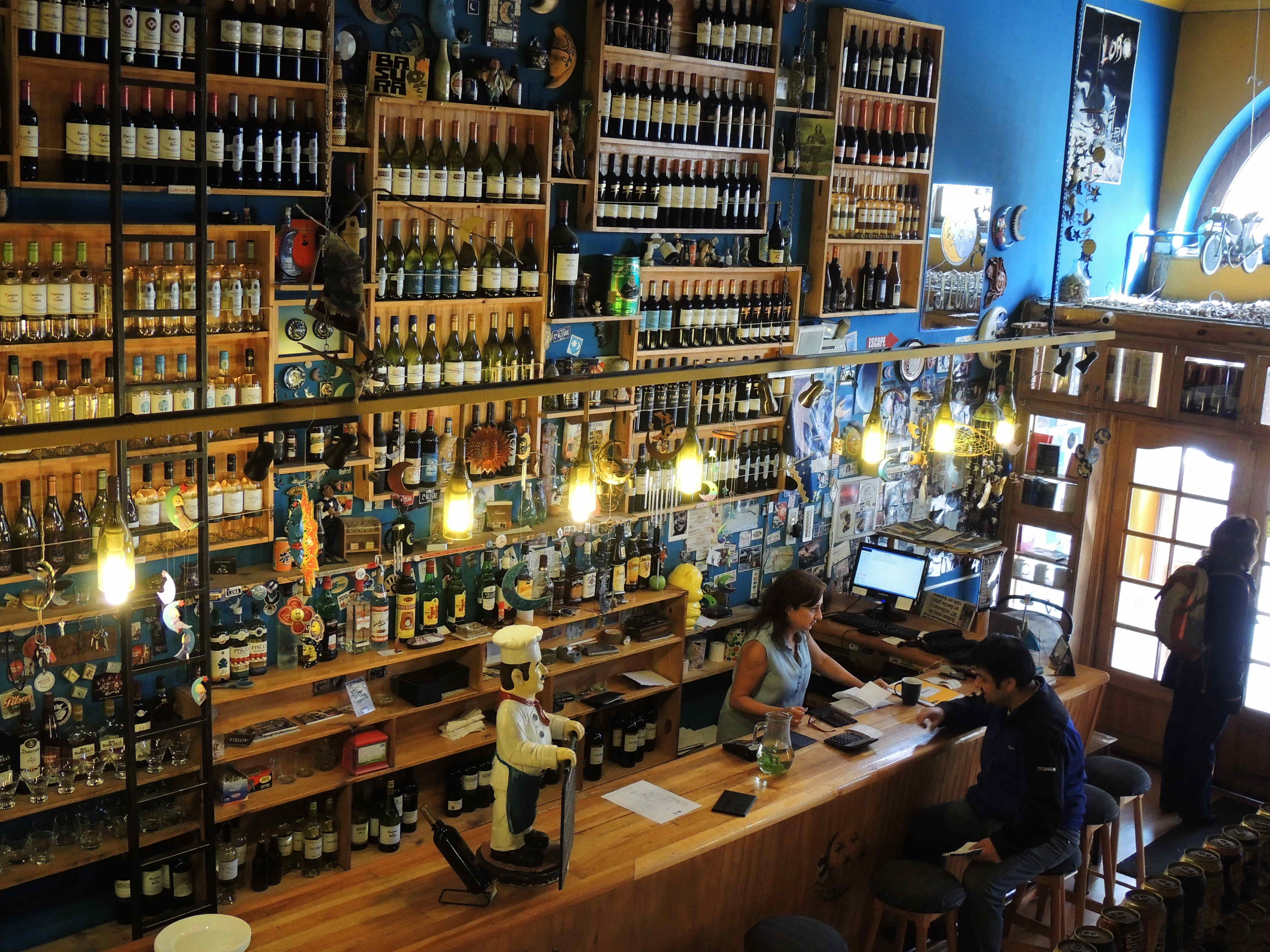This post follows on from: Four weeks visiting Patagonia, Atacama and Mendoza
Ushuaia
Ushuaia is at latitude 550 South, the same as Macquarie Island, making it well south of Hobart at 430. Naively we expected a small isolated settlement in freezing barrenness. Yet we found a thriving tourist hub of 60,000 people with good infrastructure, interesting architecture and a bustling port serving the cruise liners travelling to Antarctica. We certainly didn’t feel like we were at the end of the world.
We had about 24 hours in Ushuaia. That enabled us to see the countryside, the Beagle Channel and explore the township. Our goal was to board the M/V Stella Australis, a small cruise ship with just 100 cabins that would take us around Tierra del Fuego over four days and three nights. We could see it moored at the port, dwarfed by the much larger cruise ships that would head out into the open sea towards the Antarctic Peninsula and the subantarctic islands.
Before boarding at 5pm, however, we had time for lunch!
TripAdvisor lists 21 restaurants under “Ushuaia Crab”, and our tour guide took the sixteen of us to the number one rated of those, El Viejo Marino.
This was one of the most interesting food experiences we had ever had. Giant fresh king crab, a specialty of the region, cooked when you order. And when it arrives you will be given instructions as to how to tackle what is set before you.
There are other seafood options.
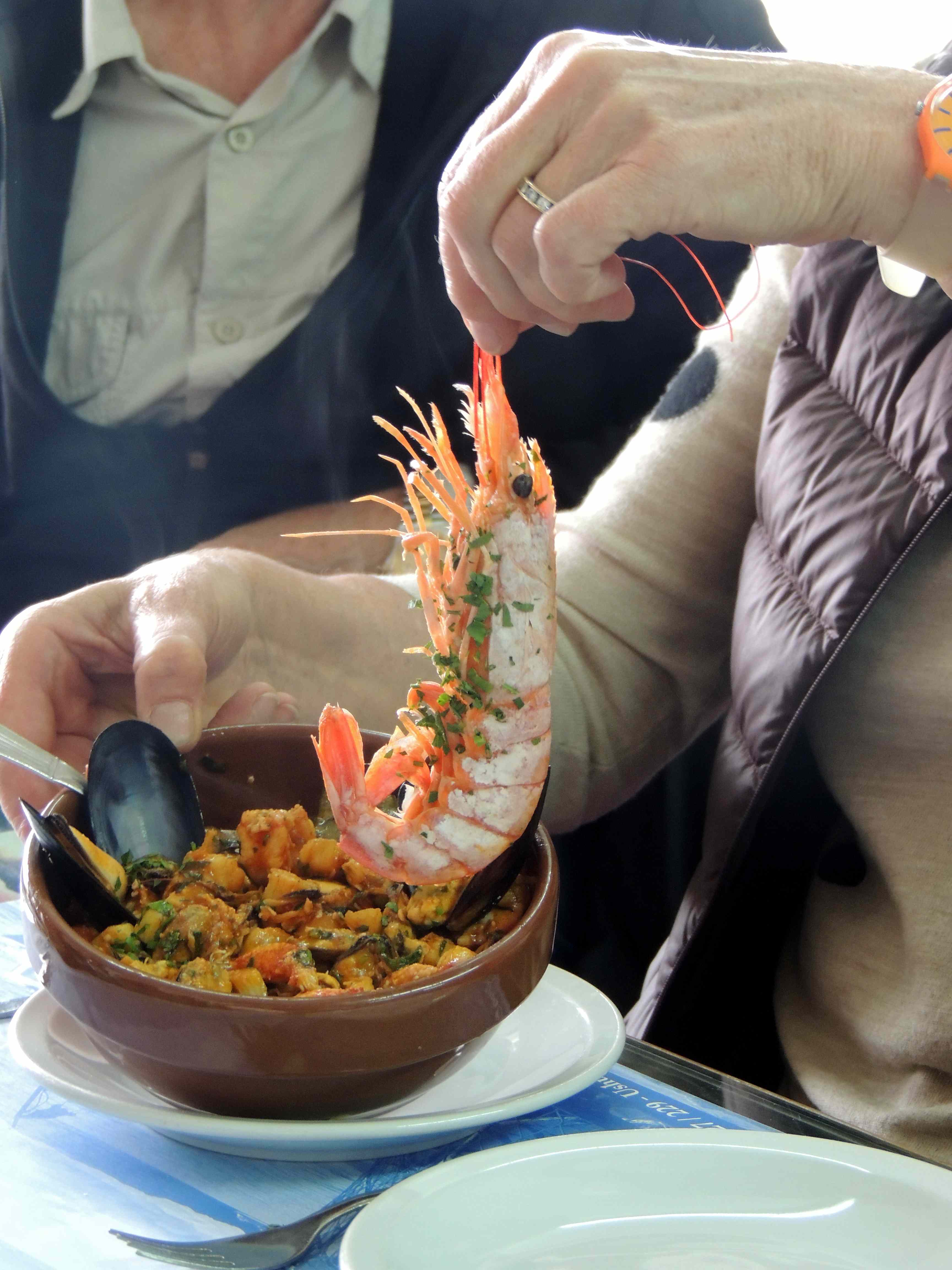 The eating experience is best described by this picture.
The eating experience is best described by this picture.
The end result is not a pretty sight. But the memories are great.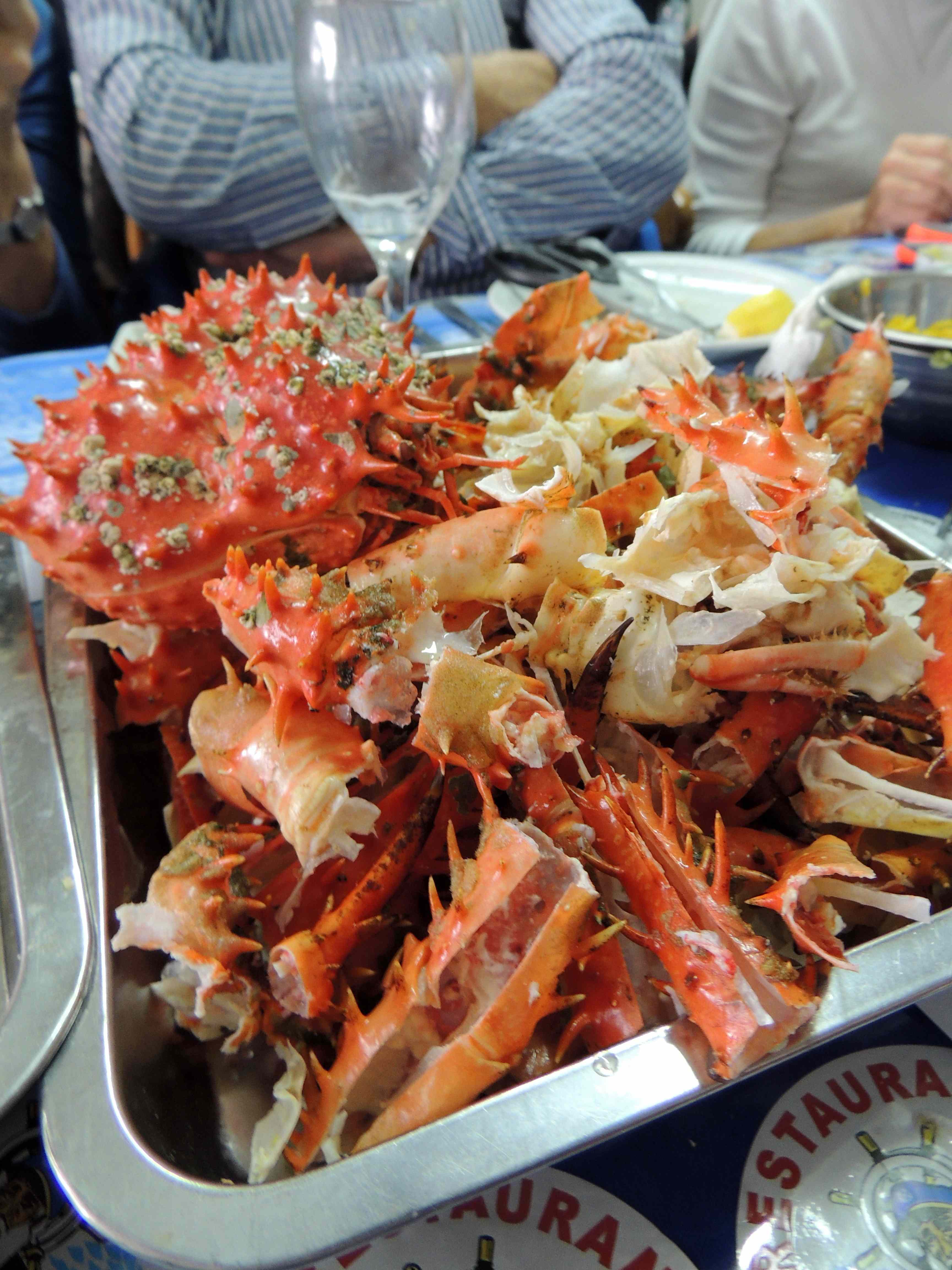
Our boat
It seems that the M/V Stella Australis is one of the few ways of exploring the islands, inlets and fjords of the Tierra del Fuego archipelago.
When we boarded we soon realised we would be eating rather stylishly, beginning with a selection of finger food and Champagne-style cocktails on the deck as we sailed out of port towards Cape Horn, saying goodbye to Ushuaia. With just 100 cabins and up to only 210 passengers the boat did not overwhelm.  Our cruise included full board and a wide range of activities. One of my memories are of the large table of desserts served each lunch and dinner time. Below is a photo of a cake made using dulce de leche; the recipe is at the end of this blog post.
Our cruise included full board and a wide range of activities. One of my memories are of the large table of desserts served each lunch and dinner time. Below is a photo of a cake made using dulce de leche; the recipe is at the end of this blog post.
Following is the route our boat would take. First stop, Cape Horn, last stop, Punta Arenas, with wonderful sights in between.
The excursions involved passengers disembarking via Zodiacs.
Cape Horn
Some of the disembarkations were more difficult than others. Cape Horn is in fact an island, the southernmost in Tierra del Fuego. Often the seas are too rough to visit, but we were fortunate, and we all made the journey to the albatross monument on the pinnacle.
The archipelago
The three days sailing would be extraordinary. Some photos follow.
We would see thousands of penguins, many close up.
Punta Arenas
Punta Arenas was another surprise. A city of about 130,000, it serves as a port and centre for surrounding sheep and cattle grazing, oil production and tourism. Though small, its centre is vibrant and interesting and packed with history.
And if we were wondering if we would find somewhere interesting to eat, this funky restaurant soon dispelled our concerns.
Dulce de Leche Deluxe
This cake was an accident waiting to happen! Aren’t many recipes discovered that way? And why not go over the top and make it a deluxe version!
I was searching for a great dessert or cake recipe using dulce de leche. While there are many interesting recipes, nothing had really struck me as being extraordinary.
Or at least until The Melbourne Age published the recipe by Adam Liaw for his Bitter caramel and chocolate custard layer cake.
With Liaw’s recipe, the cake separates into two layers: cake at the top and a caramel sauce underneath. It struck me that the chocolate and caramel custard could be replaced by a dulce de leche sauce.
Following is the recipe I tried. The cake part is reproduced exactly from Liaw’s version while I used my own version of dulce de leche. Note that the method we give for dulce de leche sauce is not typical: check the Internet and you will see the most common method given is heating a tin of condensed milk for an hour or more, so use that or another method if you wish, for example, Donna Hay’s method.
I was hoping that, even though everything is mixed together, the cake would separate into two layers, the bottom one being a delicious condensed milk like cream of dulce de leche.
However, it didn’t quite work out that way as the cake did not separate at all. Instead it cooked and looked like a typical slightly gooey, non-descript chocolate coloured cake, with no layers. But it was actually quite lovely, matching a cheesecake or fudgy, flourless almond cake for texture and with only hints of condensed milk. It is very moist and quite sophisticated in flavour. It is rather rich. You could try and substitute some or all of the flour with almond meal, or hazelnut meal.
If you want to try it, make the cake ahead of time and serve it cold with cream. (Or reheat it slightly in the microwave.) It lasts several days in the fridge. Freeze it in sections for a rainy day when you want something interesting for drop-in guests.
Who knows, if you try it you might find it separates into two layers!
For the dulce de leche sauce:
- 100g dark brown (or brown) sugar
- ¼ tsp salt
- 125g salted butter, coarsely chopped
- 400g sweetened condensed milk
For the cake batter:
- 1/4 cup castor sugar
- 4 eggs, separated
- 125g butter, melted and kept warm
- 1 tbsp cold water
- 1 cup plain flour
- 1/4 tsp salt
- 1 tbsp cocoa powder, plus 1 tsp for dusting
- 1 tsp white vinegar
- ½ tbsp icing sugar
Method
Heat your oven to 160oC and grease and line a 23 cm spring form pan (or pie or tart tin with a removable base). Spray the sides with a neutral vegetable oil. (Or use a 20cm square cake tin.)
Add the sugar, salt and butter to a small saucepan, and heat gently, just enough for the two to combine. Stirring constantly, add the condensed milk and bring to a light simmer for several minutes or until the mixture changes colour to brown caramel. Set aside.
In the bowl of a stand mixer, combine the egg yolks and the castor sugar, beating until pale and fluffy. Add a tablespoon of cold water and the warm butter and whisk to combine.
With the mixer set to slow, add the flour, salt and a tablespoon of cocoa. Then add the dulce de leche sauce a little at a time until the mixture is smooth.
Separately whip the egg whites to firm peaks and add the vinegar, whisking to combine. Fold half the egg whites into the batter mixture until combined, then fold in the remaining egg white.
 Transfer to the cake tin and bake for 30-40 minutes or until the top is brown and the edges well set. The cake should still be wobbly in the centre. (If you cook it past the “wobbly” stage, it will still be fine but firmer.)
Transfer to the cake tin and bake for 30-40 minutes or until the top is brown and the edges well set. The cake should still be wobbly in the centre. (If you cook it past the “wobbly” stage, it will still be fine but firmer.)
Cool to room temperature in the tin, then chill in the fridge for at least two hours. Remove from the tin and dust with the remaining cocoa mixed with the icing sugar to serve.
Equipment: Small saucepan. A 23 cm spring form pan (or pie or tart tin with a removable base).
Difficulty: 3/5, Moderately difficult. 20 to 30 minutes preparation, plus 30 to 40 minutes or so cooking.
Serve: Cold or slightly reheated with thick cream and perhaps a fruit accompaniment or spoonfuls of your own, homemade, dulce de leche. Serves 8 to 12 people.
Click here for the next stage in our South American journey: Torres del Paine!


